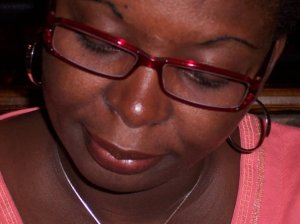Mymcbooks Talks About Education: Beginnings of Black Education
Very few black Virginians received any education at all until public schools were established during Reconstruction. Public schools in Virginia were segregated from the outset, apparently without much thought or debate, on the widely-held assumption that such an arrangement would reduce conflict. Of course, public schools were segregated in many other states, both North and South.
When public schools were a novelty, most black Virginians were thrilled to have any free education at all. Moreover, they liked having schools of their own, not subject to white interference, in which black children would feel comfortable and not be taunted with racial epithets.
These schools, however, were at the mercy of the white-controlled state government for funding. Many whites did not want blacks to become educated, fearing they would challenge white supremacy and not be content with jobs working in the fields or in domestic service. Black schools therefore received far less financial support than did white schools. Black schools had fewer books, worse buildings, and less well paid teachers. Ramshackle, segregated schools marked black Virginians with a stigma of inferiority and the status of second-class citizenship that they would have to endure throughout their lives. http://www.vahistorical.org/civilrights/education.htm


|
|
Early 20th century group portrait
The Virginia Constitution of 1870 mandated a system of public education for the first time, but the newly established schools were operated on a segregated basis. Despite social and economic challenges, African Americans pursued education with great fervor. Courtesy Valentine Richmond History Center, Cook Collection. |
 |
|
|


|
|
Interior, African American schoolhouse
In this typical southern classroom of the early 1900s, barefoot children work under the supervision of a single teacher, who taught all subjects, ages, and grades. Courtesy Library of Congress. |
 |
|
|


|
|
African American school, Halifax County
Both the state and local governments supported the public school system, but black schools were chronically underfunded. Compare this primitive, wooden African American school in South Boston, Virginia, to the nearby photographs of white schools in South Boston from the same time period, the 1920s and 1930s. Courtesy Library of Congress. |
 |
|
|


|
|
African American school, Halifax County
School attendance, particularly in rural areas, tended to be erratic, and Virginia had one of the lowest rates of attendance in the nation in the years before World War II. Black schools, however, were so underfunded that most of them were overcrowded. In 1900 the average black school had 37 percent more pupils in attendance than the average white school. Shown here is a black school in South Boston, Virginia, in the 1920s or 1930s. Courtesy Library of Congress. |
 |
|
|


|
|
Elementary school for whites, Halifax County
In the 1937–38 school year, about the time of this photo of a white elementary school in South Boston, Halifax County had eight brick, stone, or concrete schools for whites but only two similar buildings for blacks. Courtesy Library of Congress. |
 |
|
|


|
|
Elementary school for whites, Halifax County
In 1937–38, in Halifax County, the total value of white school property was $561,262, contrasted to only $176,881 for the county’s black schools. Shown here is a white elementary school in South Boston. Courtesy Library of Congress. |
 |
|
|



|
|
Virginia Randolph Cottage, Henrico County
In 1908, Henrico County Training School instructor Virginia Estelle Randolph became the nation’s first Jeanes Supervising Industrial Teacher. Anna Jeanes, a wealthy Philadelphia Quaker, established a fund to employ black “supervisors” to upgrade vocational training in black public schools in the South. This was a natural extension of the educational philosophy Randolph herself had developed, which followed the precepts of Booker T. Washington, emphasizing job training and home economics. Shown here is the 1939 cottage in which Miss Randolph taught home economics and which she used as an office. It is a now a national historic landmark. Courtesy Department of Historic Resources. |



|
|
St. Paul’s Chapel School, Brunswick County
Julius Rosenwald, an early partner in Sears, Roebuck & Company, and later its president, met with Booker T. Washington in May 1911 and then established a fund to improve the education of southern blacks by building schools. Rosenwald specified the size and height of rooms, the placement of desks and blackboards, and even the paint colors. Large banks of windows characterize the so-called Rosenwald schools, of which 5,357 were built in the South by the time of his death in 1932. His $4,400,000 contribution was matched by $18,000,000 in state and local government funds, $1,200,000 from other foundations, and $4,700,000 from the African American community itself. Shown here is St. Paul’s Chapel School in Brunswick County, the only one-room school of the thirteen Rosenwald schools constructed in that county. Courtesy Department of Historic Resources. |


|
|
Doswell Elementary School, Hanover County
Doswell Elementary School for African Americans in Hanover County as it appeared in 1955. Courtesy Martha Moore. |
 |
|
|


|
|
Holley Graded School, Northumberland County
Holley Graded School, an African American school in Northumberland County, was built 1914–17 on the site of the original school founded by Sallie Holley of New York in 1869. The current four-room structure is on a two-acre tract. The school is being conserved to serve as a museum and adult-education facility. Courtesy Department of Historic Resources. |
 |
|
|


|
|
Harrison High School, Roanoke
In 1916 the Roanoke School Board authorized the construction of Harrison High School. “Public high schools for Negroes were then few and not yet welcomed with much enthusiasm by the white public,” wrote J. L. Blair Buck. Prior to the school’s completion, black students seeking secondary education had to travel to Virginia State College in Petersburg. Plans are underway to convert the building into a multi-use community center with apartment units. Courtesy Department of Historic Resources. |
 |
|
|


|
|
Riverhill School, Grayson County
In 1951, the humble, one-room, segregated Riverhill School in Grayson County served African American students from the first through seventh grades. Here, with their teacher, Mrs. Emma D. McCray, pupils walk down to meet the county bookmobile, also offered on a segregated basis. Courtesy Library of Virginia. |
February 2, 2012 -
Posted by mymcbooks |
Black History Month | Black, Education, History
No comments yet.
![]()
![]()
![]()
![]()
![]()
![]()
![]()
![]()
![]()

![]()
![]()
![]()





























Leave a comment